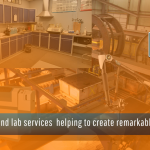
Just-in-time delivery is a business approach that involves receiving goods only when they’re needed in the production process, eliminating the need for stockpiling inventory. This strategy can provide several benefits, such as lower warehousing costs, decreased waste, and improved cash flow. Additionally, it can help businesses respond more effectively to changes in demand and reduce the risk of stock obsolescence.
However, implementing just-in-time delivery requires careful coordination between suppliers and manufacturers. It requires a high level of trust between the two parties, as suppliers must be able to reliably deliver materials on short notice while manufacturers must be able to accurately predict their needs. The approach also requires a high level of efficiency and flexibility in the production process to ensure that goods are produced and delivered in a timely manner. Despite these challenges, many businesses have successfully implemented just-in-time delivery and have seen significant benefits in terms of cost savings and improved operations.
One of the key advantages of just-in-time delivery is its ability to reduce the amount of inventory a business needs to keep on hand. This can be particularly beneficial for businesses dealing with perishable goods or items with a limited shelf life. By receiving materials and goods right when they’re needed, businesses can minimize waste and avoid having to dispose of expired or outdated products. Additionally, just-in-time delivery can help businesses conserve cash by reducing the need for large upfront purchases of inventory.
Another benefit of just-in-time delivery is its ability to improve responsiveness to changes in demand. With this approach, businesses can quickly adjust their production schedules and order materials as needed to meet changes in customer demand. This can help businesses avoid overproducing goods that won’t sell and can also help them capitalize on sudden spikes in demand.
Despite its many benefits, just-in-time delivery isn’t without its challenges. For example, it can be difficult to coordinate with suppliers and manufacturers to ensure that materials are delivered on time and in the right quantities. Additionally, just-in-time delivery requires a high level of efficiency and flexibility in the production process, which can be difficult to achieve.
Overall, just-in-time delivery can be a powerful tool for businesses looking to reduce costs, minimize waste, and improve operations. While it may require some effort to implement, many businesses have found that the benefits are well worth it in the end.





